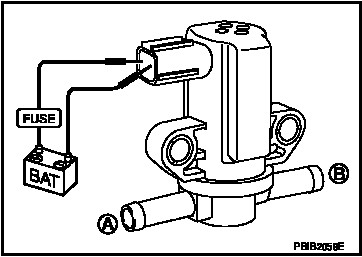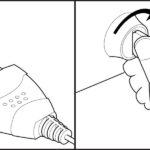A “Check Engine” light can be a frustrating experience. One common cause is the Obdii Code P0455. This code indicates a large leak in the Evaporative Emission Control (EVAP) system. This article will explain what the P0455 code means, its common causes and symptoms, and how you can diagnose and fix the problem.
Understanding the EVAP System and P0455
The EVAP system prevents fuel vapors from escaping into the atmosphere. It captures these vapors and stores them in a charcoal canister, later purging them into the engine for combustion. The P0455 code specifically signifies a “Gross Leak” detected by the EVAP system’s pressure sensor. This means a significant amount of vapor is escaping, exceeding the system’s acceptable threshold.
Common Causes of P0455
A variety of issues can trigger the P0455 code. Some of the most frequent culprits include:
- Loose or Missing Gas Cap: This is the most common and easiest fix. A loose or missing gas cap prevents the EVAP system from sealing properly.
- Damaged Gas Cap: A cracked or damaged gas cap seal won’t create a proper seal, leading to a leak.
- EVAP Canister Purge Valve: A faulty purge valve can prevent the system from properly purging stored vapors or may allow vapors to escape.
- EVAP Canister Vent Valve: A malfunctioning vent valve can disrupt the pressure balance within the EVAP system, causing a leak detection.
- Damaged or Disconnected EVAP Lines: Hoses and lines within the EVAP system can crack, deteriorate, or become disconnected, resulting in leaks.
- Fuel Tank Pressure Sensor: A faulty pressure sensor may provide inaccurate readings, triggering the P0455 code.
- Cracked Fuel Tank or Filler Neck: While less common, damage to the fuel tank or filler neck can lead to significant leaks.
Symptoms of a P0455 Code
While the illuminated “Check Engine” light is the most obvious symptom, you might also experience:
- Fuel Smell: A strong gasoline odor, especially around the vehicle or near the fuel filler area.
- Reduced Fuel Efficiency: A large EVAP leak can impact fuel economy.
- Difficulty Starting: In some cases, a severe leak can make starting the engine challenging.
Diagnosing and Fixing P0455
-
Check the Gas Cap: Ensure the gas cap is tightly secured and inspect it for damage. Replace if necessary.
-
Visual Inspection: Examine all EVAP system hoses and connections for cracks, damage, or disconnections. Pay close attention to areas around the EVAP canister and purge/vent valves.
-
Use an OBDII Scanner: Confirm the P0455 code and check for any other related codes.
-
Test the Purge and Vent Valves: Inspect the valves for proper operation. This may involve applying voltage and checking for air flow or vacuum as per your vehicle’s service manual.
-
Smoke Test: A smoke test can help pinpoint leaks in the EVAP system. This involves introducing smoke into the system and observing where it escapes.
-
Replace Faulty Components: Based on your diagnosis, replace the damaged gas cap, hoses, valves, or other components as needed.
-
Clear the Code: After repairs are completed, use the OBDII scanner to clear the P0455 code.
Conclusion
Addressing the OBDII code P0455 often involves a straightforward fix, such as tightening or replacing the gas cap. However, more complex issues may require professional diagnosis and repair. By understanding the EVAP system and the potential causes of P0455, you can effectively troubleshoot the problem and ensure your vehicle runs efficiently and safely. Remember to consult your vehicle’s specific service manual for detailed diagnostic and repair procedures. A properly functioning EVAP system is crucial for minimizing emissions and protecting the environment.


